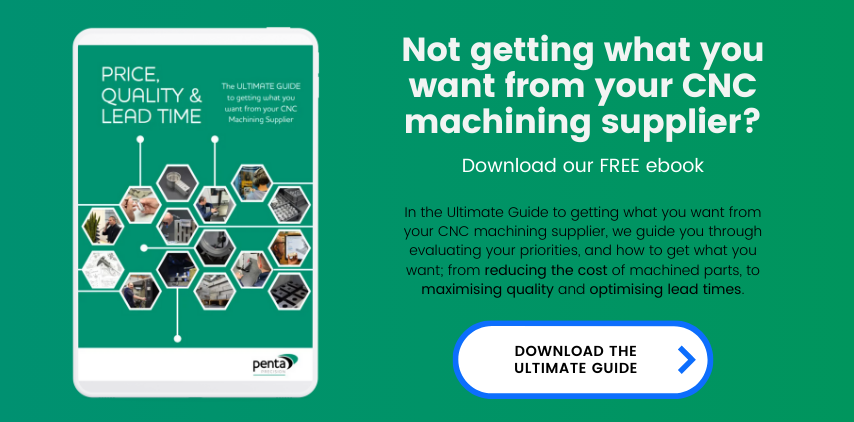 by Sam Brown
by Sam Brown
If you work in the electronics or computer industry, you'll be all too aware that enclosures - whether it be a PCB enclosure or electronic housing - are usually an integral part of a component, improving electronic device performance and keeping everything neat and tidy internally.
There are several considerations when designing an electronic enclosure. One major factor in electric enclosure design is ensuring the end product is financially viable. From material choice to surface finish, there are decisions made across the whole manufacturing process where you can avoid unnecessary costs.
In this blog I will lay out the main considerations when designing a custom electronic enclosure taking into account the application, gaining efficiencies and reducing cost.
If you're still weighing up your options when it comes to manufacturing a custom enclosure for electronics, our article 'Which manufacturing method is best for enclosures?' may provide some vital clarity.
1. Choosing a Material
Let’s start with the basics! There are two main factors when it comes to choosing a material for your machined electronic enclosure. Firstly, you will want to consider the application and therefore will need to closely compare the physical properties.
Secondly, you will need to consider which material from a manufacturing point of view: raw material costs, availability, how fast a material can be machined, and to what tolerance, as these factors will impact on the price and lead time of your finished components.
Aluminium, stainless steel and plastic are the materials generally specified for machined enclosures. For detailed information about these materials and others, see our Resource Hub, or if you have a specific question, get in touch with our expert team and we can talk through the benefits of each for your application.
Let’s have a run through the most common materials for machined electronic enclosures…
Aluminium
Aluminium is the most common material used for machined enclosures because:
- It is light-weight
- The raw material is comparatively low cost
- It is readily available in multiple sizes of plate, round bar and flat bar
- It generally has shorter run times due to the high rate of material removal
- Tight tolerances are easily achievable
- It can be anodised in multiple colours, giving options for branding.
Top tip: to achieve a consistently superior finish on an electronics enclosure using an anodising process, I recommend choosing Aluminium 5083.
Stainless Steel
Stainless steel is mostly used in electronic enclosures where aluminium would fail, for example, in harsh environments, sub-zero temperatures, or when the enclosure will encounter corrosive chemicals.
Two of the most common grades of stainless steel that I recommend are 304 and 316 because they generally strike the right balance between corrosion resistance and value for money.
If specifying stainless steel, consider:
- Stainless steel is heavier than aluminium and plastic
- It is generally more expensive than aluminium and plastic
- It is less readily available in thicker plate sizes
- It has lower rates of material removal, meaning longer run times than aluminium and plastic
- Tight tolerances are easily achievable
- Adding colour to steel is usually through powder coating, rather than anodising. Multiple colours can be used but this process will add thickness to the machined structure.
Plastic
There are many grades and trade names of plastic. Two of the most common grades for electronic enclosures are Acetal, such as Delrin®, and ABS (Acrylonitrile Butadiene Styrene).
For plastic electronic enclosures, consider:
- Plastic is light-weight
- It is low-cost (although some grades are not stocked, so a minimum order value may apply)
- Some plastics have long lead times
- It has a high rate of material removal
- Plastics are more prone to movement after machining, meaning holding tight tolerances is more challenging
- There are limited options to change appearance of plastics, so only standard colours are possible.
I won’t sugarcoat it: machining plastics is hard. So if you do specify a plastic machined enclosure, to ensure the best outcome, choose a machining company with extensive experience in machining plastics, who will support you in the design, and communicate effectively with you throughout the process.
(Click image to enlarge)
2. Tolerances
Tolerances should be considered in the early stages of your electronic enclosure design. I often see designs where tolerances haven’t been fully considered which can push up costs. Penta’s default tolerances are DIN-ISO-2768-mk, but we can support designers on deciding the most appropriate tolerance for an enclosure.
By considering where tighter tolerances are necessary, and where more open tolerances can be applied, it’s possible to reduce run time on the machine and therefore reduce the overall costs.
Certainly, where tolerances must be maintained, this is critical and should be specified on the drawing, but there may be areas of the enclosure where fit and tolerance can be relaxed. For example, if a cavity has a clearance of 1mm for the mating part, specifying a blanket 0.1mm tolerance will require additional machining time that will add unnecessary costs.
3. Surface Finish
Most designs and drawings we receive have a standard drawing border usually stating a surface finish of Ra1.6µm. This is informally known as ‘a good machined finish’. But is this always necessary?
If the inside of an electronics enclosure is non-customer facing, or there are sections of the enclosure that are considered less important, the surface finish could be relaxed to Ra3.2µm or greater. By specifying which surfaces are customer facing or need a higher spec finish, the machinist can take greater care on these faces, and then remove waste material faster on the less important faces, saving time on the machine and reducing unit cost.
4. Corner Radii
I always recommend specifying as large a corner radius as possible on electronic enclosure designs as it allows a machinist to save time on the machine by using a larger, standard, off the shelf cutter.
This is especially important when designing deep enclosures. Standard cutters are available at a length of 6-7 times the diameter, so to produce a 4mm radius for example, an Ø8mm cutter would be able to machine 48-56mm deep. A 2mm radius would only go half as deep, taking longer to machine. And of course, the deeper the tool goes the slower the tool feed rate.
5. Size and Depth of Tapped Holes
Efficiencies can also be gained from specifying the correct size and depth tapped hole. Generally, to get the maximum strength from a tapped hole, the thread depth needs to be 2.5 x Ø. For example, an M3 x 0.5mm pitch tapped hole needs a maximum thread depth of 7.5mm (3x2.5mm). Going longer than this will not bring any additional strength, but it will add cost through custom tooling requirements.

6. Location of PCB Upstands
Similarly, the location of features such as PCB upstands, islands or bosses within enclosures should be considered with tooling in mind. I’ve seen designs where such features are situated as close as 2mm to the wall of an enclosure. Such a small gap means a Ø2mm cutter needs to be used, which will impact on the time taken on the machine.
I recommend grouping these features together, or consider tabbing them to the wall of the enclosure to save machining time and reduce cost.
7. Get the Right Advice
Partnering with an experienced CNC machining company who can offer machining design advice for electronic housing design as part of their service is invaluable. Some companies also offer an additional design for manufacture service which could save you considerable time and money in the long run.
Get Penta Involved
Penta Precision has over 20 years’ experience in machining a wide array of components and materials, including electronics enclosure and hard-to-machine plastics. Our experienced engineers can alert you to potential design and engineering issues before they become costly, time-consuming, and stressful.
If you’d like to chat through an upcoming project, please get in touch with me on 023 9266 8334.


